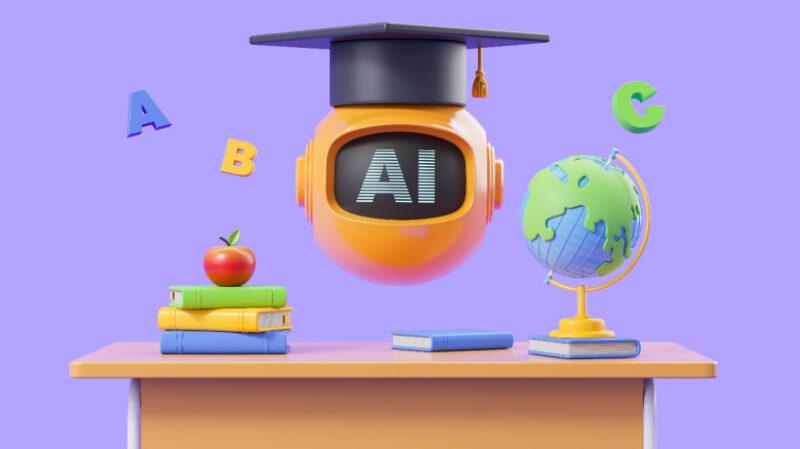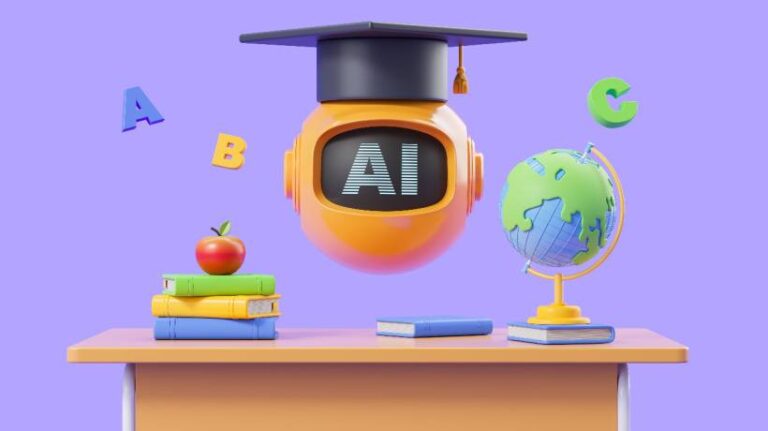
AI learning assistant: GPS for personalized K-12 learning paths
Google Maps and GPS have really messed us all up. You can no longer imagine opening a thick paper map to find the best route. Plus, if unexpected road closures occur, we’ll reroute you instantly without any hassle. Education may be just like that. It guides students along the optimal route to achieving their learning goals. This is exactly what AI learning assistants do. These help educators find the best learning paths to support individual student learning.
But that’s not all. Did you notice how GPS can give you lane departure warnings, assist you with parking, and even brake when integrated with your vehicle for driving assistance? The same goes for AI in education, simply defining a learning path. Not just that. See how cutting-edge technologies, like GPS, are augmenting human endeavors and reshaping the teaching and learning experience in K-12 and higher education.
Dynamically reroute learning journeys
The biggest benefit of leveraging an AI learning assistant is that it can help provide a personalized learning experience. AI-powered learning analytics tools ingest a variety of student data, including:
Activities on the learning platform Recommended learning formats and learning times Learning pace and progress Skills and knowledge gaps Interactions with the AI learning assistant
…and so on.
In the same way that GPS reroutes you to minimize traffic and get you to your destination on time, AI-powered tools help ensure students achieve desired learning outcomes through the most optimal route. I will make it possible. All of this follows an established curriculum. These tools can also personalize assessments and learning feedback to customize the overall educational experience. AI learning assistants can also apply the Socratic method, encouraging students to independently discover answers to questions and assignments. With students at the wheel, they can independently navigate their educational journey and develop a sense of ownership and responsibility.
Helping teachers navigate diverse classrooms
I need to state this first. Teachers are irreplaceable, and AI is a tool to help them do their job better: teaching. AI learning assistants improve the educational experience in several ways. Teachers spend countless hours creating and evaluating assessments, grading assignments, managing student learning data, and creating progress reports. AI-powered K-12 education tools can take over many of these tasks, including tracking attendance, grading, finding alternative sources, and translating complex topics and concepts. According to the World Economic Forum, AI tools can take over up to 20% of administrative and repetitive tasks, freeing up teachers’ time to focus on engaging and inspiring students.
The difference between an AI-powered classroom and a traditional classroom is the ability to identify if a student is struggling and initiate intervention in real-time. Early intervention and timely support ensure continued student engagement. Instant feedback on AI-powered assignments frees teachers from endless cycles. This allows you to connect with your students about the most important activity: instruction. Teachers’ responsiveness, guidance, and encouragement help students feel more satisfied with their learning. As the teacher’s role shifts from assessing to facilitating learner progress, students’ fear of making mistakes is greatly reduced.
Accelerate learning and enhance engagement
Augmenting your digital learning platform with AI learning assistants increases student engagement through interactive mechanisms. These assistants solve student questions on the spot as they arise, preventing students from dropping out due to difficulties. Additionally, continuity of learning is maintained even in the absence of a teacher. Intelligent search aids help students find supplemental resources for complex topics. Additionally, formative assessments can be gamified and include multiple format questions to maintain student interest. Identifying students’ learning levels and helping them practice what they’ve learned promotes retention.
Higher level, meaningful engagement and continuous application accelerate the acquisition of skills and knowledge. Immediate feedback provides an opportunity to correct misconceptions, close instructional gaps as quickly as possible, and prevent gaps from escalating into learning loss.
Seamless integration of AI in education
Advanced AI learning assistants can be seamlessly integrated with various digital learning platforms. API-based integration with standard e-learning platforms allows you to seamlessly transition your static learning platform into an engaging and dynamic educational experience. These create new opportunities for educators and students to increase efficiency and make education more effective.
Drive success with an AI learning assistant
A US-based study found that 70% of K-12 students and 75% of undergraduate students are already using some form of AI to enhance their educational experience. Power your digital education platform with AI learning assistants and AI workflows to keep students in your LMS longer while improving access to quality resources. These AI workflows are the components that make up the proverbial GPS, guiding students through personalized learning paths and timely interventions.
K-12 education publishers have the greatest responsibility to make learning materials relevant and relevant, increasing student engagement and leading to academic success. Leveraging AI in the form of course creation tools and learning assistants to navigate the educational journey can improve overall outcomes. By integrating AI into digital learning platforms, we can create an environment where all students have the best opportunity to thrive, paving the way to a brighter, more informed future.


